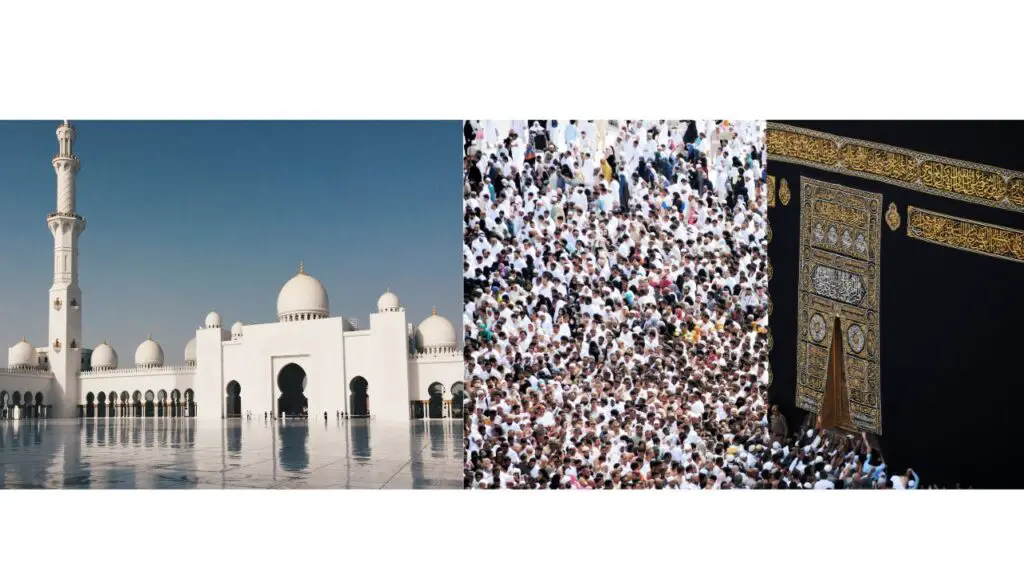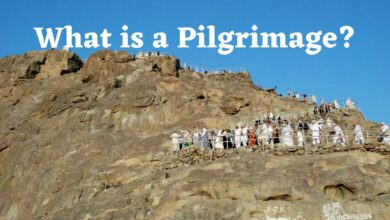Places of Worship in Islam
A Tapestry of Devotion: Exploring Islamic Places of Worship


Introduction of Places of Worship in Islam
In Islam, places of worship hold a significant place in the hearts and lives of Muslims around the world. These places are not only spaces for communal prayers and spiritual reflection, but they also embody the essence of the faith and its rich history. Islam, as a global religion, is not limited to a single architectural style or form of worship space. Instead, it encompasses a wide range of places of worship that reflect the cultural, historical, and geographical diversity of the Muslim world.
Mosques: The Heartbeat of Islamic Worship
The most recognizable and prevalent type of Islamic place of worship is the mosque. Mosques are central to the Islamic community, serving as spaces for the five daily prayers, the Friday congregational prayer (Jumu’ah), and other communal activities. While the basic design of a mosque often includes a prayer hall with a mihrab (a niche indicating the direction of Mecca) and a minbar (pulpit), the architectural styles and features can vary greatly.
Throughout history, various civilizations have left their mark on mosque architecture. From the grandeur of the Great Mosque of Cordoba in Spain to the intricate tile work of the Blue Mosque in Istanbul, each mosque tells a unique story of the region and the people who built it. Modern mosques also reflect a blend of traditional and contemporary architectural elements, demonstrating the adaptability of Islamic worship spaces to evolving societal needs and aesthetics.
Musallahs: Informal Places of Prayer
In addition to formal mosques, Muslims often gather in informal spaces known as musallahs for prayers and gatherings. Musallahs can be found in workplaces, universities, shopping malls, and other public areas. These spaces accommodate the needs of Muslims who are away from home or unable to reach a mosque for congregational prayers. Musallahs underscore the flexibility of Islamic worship, emphasizing the importance of maintaining a connection with God even in non-traditional settings.
Eidgahs: Open-air Places of Celebration
Eidgahs are open-air prayer grounds specifically used for the special congregational prayers held on the occasions of Eid al-Fitr and Eid al-Adha. These prayers mark the end of Ramadan (the month of fasting) and the commemoration of Abraham’s willingness to sacrifice his son. Eidgahs provide a communal space for Muslims to gather and celebrate these joyous occasions, often bringing together large numbers of worshippers to offer prayers and listen to sermons.
Dargahs: Shrines of Spiritual Sufi Mysticism
Dargahs are shrines built in honor of revered Sufi saints. Sufism is a mystical branch of Islam that emphasizes the inward search for God and divine love. Dargahs hold a special place in the hearts of many Muslims who seek blessings, healing, and spiritual guidance from the saint buried there. These shrines often include elaborate architecture, intricate ornamentation, and a sense of tranquility that draws visitors seeking a deeper connection with the divine.
Zawiyyas and Khanqahs: Sufi Centers of Learning
Zawiyyas and khanqahs are traditional centers of Sufi learning and practice. They serve as spaces where Sufi disciples gather for spiritual training, Quranic study, and meditation under the guidance of a Sufi master. These places foster a sense of community, humility, and devotion among their members. Zawiyyas and khanqahs play a vital role in preserving and passing down the teachings of Sufi scholars, contributing to the spiritual enrichment of the Muslim community.
Conclusion
The diversity of places of worship in Islam is a testament to the richness and inclusivity of the faith. From the grandeur of mosques to the humility of musallahs and the spirituality of dargahs, each type of worship space reflects the cultural, historical, and spiritual dimensions of Islam. These places not only serve as sites for religious practices but also as hubs of community engagement, education, and spiritual growth. As Muslims continue to navigate the modern world, the various forms of Islamic worship spaces remind us of the unity in diversity that defines the global Muslim community.
What are the main types of places of worship in Islam?
The main types of places of worship in Islam include mosques, musallahs (prayer spaces), dargahs (shrines), zawiyyas (Sufi centers), khanqahs (Sufi lodges), and Eidgahs (open-air prayer grounds for Eid celebrations).
What is the significance of mosques in Islam?
Mosques hold immense importance as they are central to the Islamic community. They serve as spaces for daily prayers, Friday congregational prayers (Jumu’ah), and various religious and social gatherings. Mosques embody the unity of Muslims and reflect their devotion to God.
How do mosques differ in architectural style?
Mosques exhibit a diverse range of architectural styles influenced by historical, cultural, and geographical contexts. For example, the Great Mosque of Cordoba in Spain showcases Islamic and Moorish architecture, while the Blue Mosque in Istanbul features intricate Ottoman design.
What are musallahs and their purpose?
Musallahs are informal prayer spaces found in public areas such as workplaces, universities, and shopping malls. They allow Muslims to perform prayers when they cannot reach a mosque. Musallahs highlight the flexibility and adaptability of Islamic worship.
What are dargahs and their significance?
Dargahs are shrines built to honor Sufi saints, embodying the mystical aspect of Islam. They attract seekers of blessings, healing, and spiritual guidance. Dargahs offer a tranquil atmosphere for those seeking a deeper connection with the divine through the intercession of the saint.
What role do zawiyyas and khanqahs play in Islam?
Zawiyyas and khanqahs are Sufi centers of learning and practice. They serve as spaces for disciples to engage in spiritual training, Quranic study, and meditation under the guidance of a Sufi master. These centers foster a sense of community and promote Sufi teachings.
What are Eidgahs used for in Islam?
Eidgahs are open-air prayer grounds specifically designated for congregational prayers during the two major Islamic festivals, Eid al-Fitr and Eid al-Adha. These prayer grounds allow large numbers of Muslims to gather and celebrate these joyous occasions.
How do places of worship contribute to the Islamic community?
Places of worship in Islam serve not only as spaces for religious rituals but also as hubs of education, community engagement, and spiritual growth. They foster a sense of unity, belonging, and shared values among Muslims worldwide.
Can non-Muslims visit Islamic places of worship?
In many cases, non-Muslims are welcome to visit Islamic places of worship, but it’s important to respect the rules and customs of the specific place. Some mosques have designated visiting hours or guided tours for non-Muslims interested in learning about Islamic architecture and culture.
How do Islamic places of worship reflect the unity in diversity of the Muslim world?
he various types and styles of Islamic places of worship reflect the diverse cultural, historical, and geographical backgrounds of Muslims. Despite these differences, these places collectively showcase the universal message of Islam and the unity of the global Muslim community in their devotion to God.





